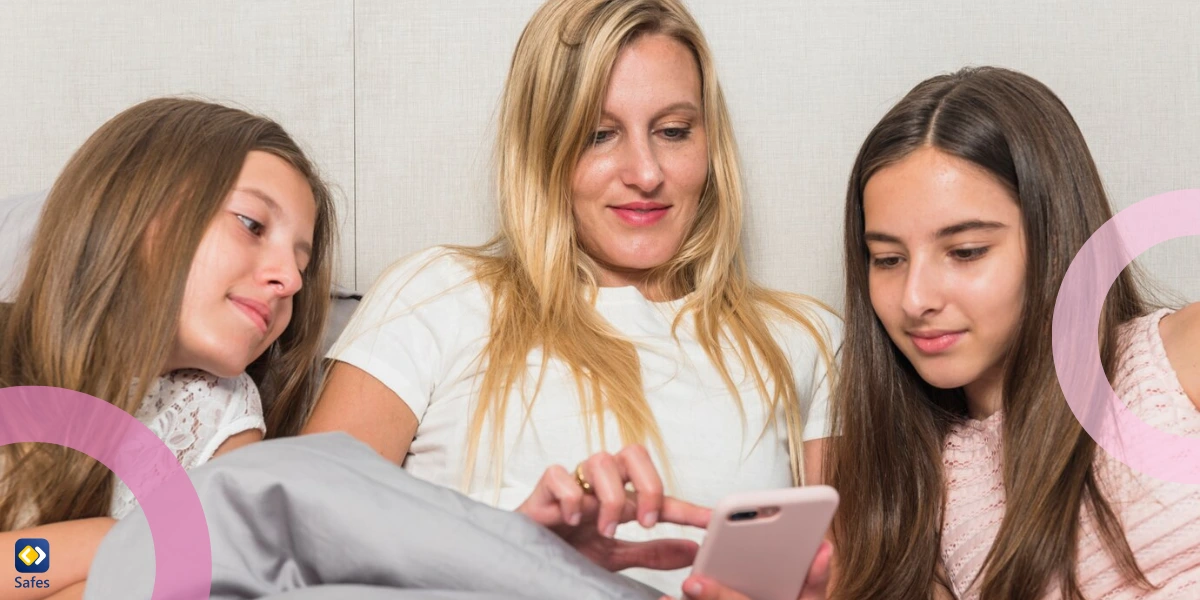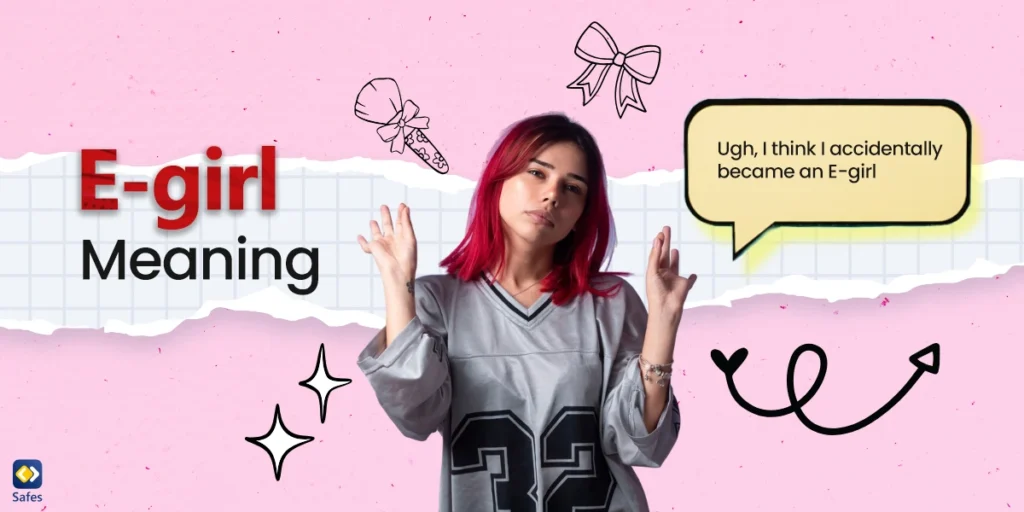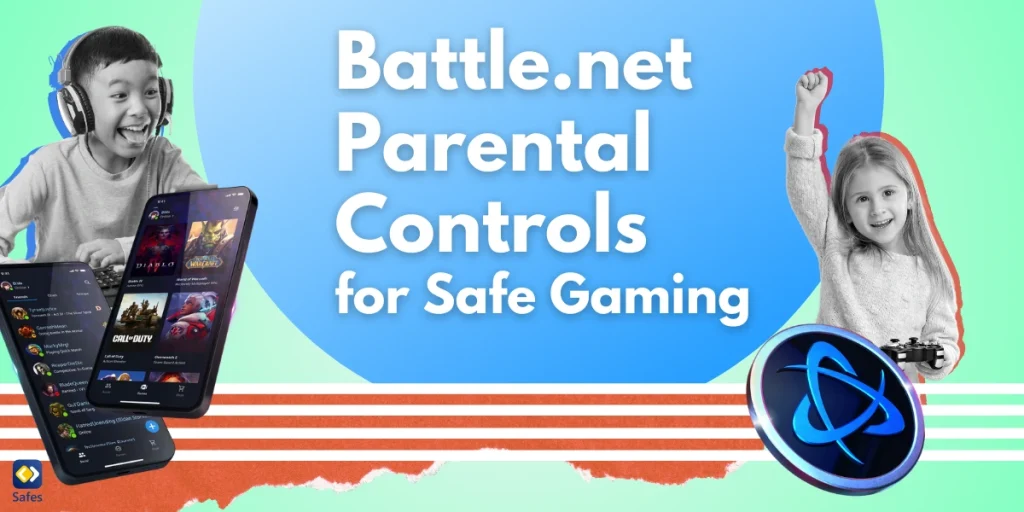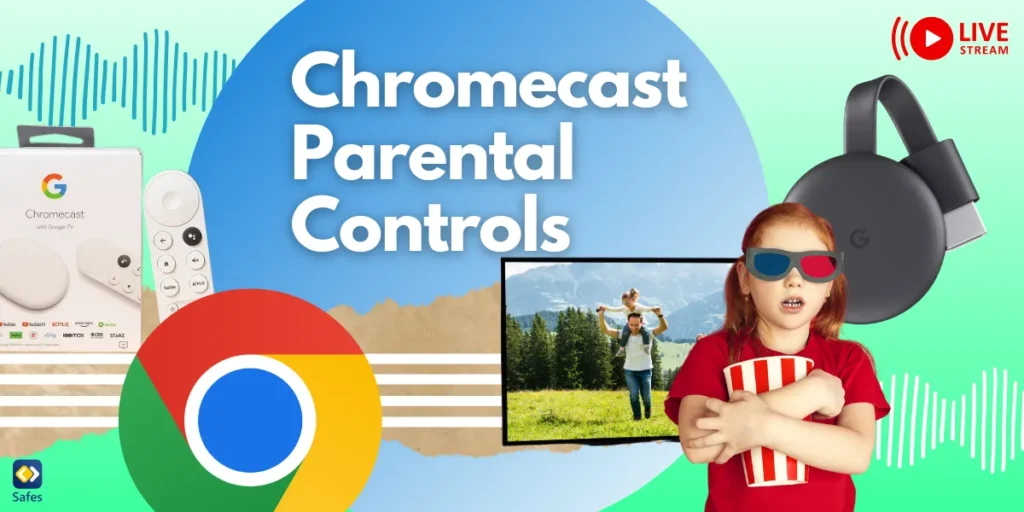The internet is constantly evolving, bringing new trends and subcultures into the spotlight. One such trend that has shaped online identities in recent years is the E-girl and E-boy aesthetic. But what does E-girl mean in 2025, and how has its definition changed over time? While originally associated with alternative fashion, emo, and goth influences, the term has taken on new meanings across social media platforms. In this blog, we’ll break down the E-girl definition, explore what an E-boy is, and discuss the online safety concerns parents should be aware of.
Download and Start Your Free Trial of the Safes Parental Control App
What Does E-girl and E-boy Mean?
The terms E-girl and E-boy describe a subculture of young people who express themselves online, particularly on platforms like TikTok, Instagram, and Discord. The “E” stands for “electronic”, emphasizing their digital presence. This aesthetic is heavily influenced by emo, punk, anime, and streetwear styles, often mixed with modern internet culture.
E-kid Meaning: The Gender-Neutral Term
Before diving into E-girls and E-boys specifically, it’s important to acknowledge the broader term: E-kid. This is a gender-neutral way to refer to someone who embraces the E-culture. While the subculture has binary expressions (E-girl and E-boy), many kids adopt elements from both, creating a fluid and unique aesthetic.
E-boy Meaning: The Soft and Vulnerable Aesthetic
E-boys are often associated with the “softboi” persona—meaning they appear sensitive, introspective, and artistic. They draw inspiration from skate culture, emo fashion, and K-pop idols, usually styling themselves with:
- Dark clothing (often oversized hoodies, ripped jeans)
- Silver chains and accessories
- Painted nails, layered necklaces, and rings
- Messy, dyed, or tousled hair
- Makeup (such as smudged eyeliner or faux freckles)
Despite their confident, alternative look, E-boys often portray themselves as vulnerable and in touch with their emotions, appealing to the idea of being “mysterious” and “deep.”
E-girl Meaning: Cute and Innocent—But Not Always
E-girls, on the other hand, mix kawaii (cute) aesthetics with alternative fashion. They blend elements from anime, goth, and cosplay cultures, often creating a contrast between innocence and edginess. Their style usually includes:
- Soft or pastel-colored hair (often pink, blue, or green)
- Heavy eye makeup (bold eyeliner, heart stamps under the eyes)
- Chokers, plaid skirts, fishnets, and oversized sweaters
- Cutesy yet rebellious mannerisms, like sticking out their tongue or making exaggerated facial expressions
- Gaming or anime references, often incorporated into their persona
Though they appear playful and innocent, some argue that E-girl culture is hypersexualized, especially on social media, where young girls may feel pressured to conform to certain beauty standards.

How It’s Used in Real Digital Interactions
Teens and kids often use the terms E-girl and E-boy in casual conversations, gaming chats, and social media posts. Depending on the context, the tone can range from playful to sarcastic or even self-deprecating. Below are some common ways they use the slang:
Examples in Texts & Social Media
- Self-Identification (Playful & Trendy)
- “Ugh, I think I accidentally became an E-girl 💀”
- “Not me dressing like an E-boy today 😭”
(Used when someone wears an outfit that unintentionally fits the aesthetic.)
- Complimenting or Teasing Someone (Joking/Sarcastic)
- “Bro, you’re basically an E-boy now with that chain and nail polish.”
- “She’s got the winged eyeliner and dyed hair… total E-girl vibes.”
(Used to comment on someone’s style, often in a teasing but friendly way.)
- Flirting (Playful or Ironic)
- “Where’s my E-girl to carry me in Valorant?”
- “Looking for an E-boy to simp for 🥺”
(Often used in gaming and social media in a semi-joking way to attract attention.)
- As an Insult (Mocking or Dismissive)
- “Why does every guy on TikTok dress like an E-boy now? 😒”
- “She’s not even a real gamer, just another fake E-girl trying to get views.”
(Some use the term negatively, implying someone is only adopting the style for clout.)
Platform-Specific Usage
Each platform has its own spin on E-girl and E-boy culture. Here’s how the term is used across different spaces:
TikTok
- Most popular platform for E-girl/E-boy aesthetics.
- Users post transformation videos (e.g., going from “normal” to “full E-girl mode”).
- Dance trends and lip-syncs are common ways E-kids showcase their aesthetic.
Snapchat
- Used mostly in private convos or Stories.
- Teens might call their friends “E-girl” or “E-boy” as a joke when they post a selfie that fits the aesthetic.
- Can be flirty—someone might jokingly say, “Okay, E-girl 😏” if a person posts a stylish picture.
Discord
- More gaming and voice-chat oriented.
- “E-girls” in gaming communities often joke about being asked for voice reveals.
- A common meme is guys asking “Are you a real E-girl?” when they hear a female voice in a game.
- The phrase “E-girl tax” is sometimes used sarcastically when girls get extra attention or free in-game items.
- Mostly about fashion and aesthetics.
- Teens post stylized E-girl/E-boy looks with fitting captions.
- Comment sections often include joking references.
Gaming Chats (Valorant, Fortnite, Minecraft, etc.)
- Common in voice chats and text chats.
- “E-girl” is sometimes used to stereotype female gamers who use a cute voice or aesthetic.
Risk Level Indicator (Parent Alert System)
🟡 Yellow – Context Matters
While the terms E-girl and E-boy are generally harmless and mostly refer to a specific aesthetic or online persona, the context in which they are used can change their meaning.
Why It’s Yellow:
- Meme culture & teasing: Kids and teens use these terms playfully, but they can sometimes be used to mock or stereotype someone.
- Flirting & online attention: Some teens use “E-girl” or “E-boy” in a flirtatious way, sometimes seeking validation from online strangers.
- Misconceptions: Some people assume E-girls are only interested in attention, leading to negative or even sexist stereotypes.
Trend Tracker: Is It Still Relevant?
📉 Fading – Was big, but is declining
The e-girl and e-boy aesthetics were highly popular in the late 2010s and early 2020s, particularly on platforms like TikTok. However, their prominence has waned in recent years, with trends shifting toward more subtle and individualized internet aesthetics. While some elements, like alt-fashion and soft-boy styles, remain influential, the specific “e-girl/e-boy” label is no longer at the forefront of internet culture, as of March 2025. Instead, newer trends have taken center stage, making the e-girl and e-boy styles more of a nostalgic reference than an active movement.
Online Safety Considerations
Although the slang itself isn’t inherently dangerous, parents should be aware of riskier situations where E-girl/E-boy culture intersects with online safety concerns:
- Online Predators: Some older users may take advantage of the E-girl/E-boy trend to manipulate or groom younger users, especially if kids seek online validation.
- Hyper sexualization: Certain parts of this subculture, particularly on TikTok and Instagram, promote exaggerated or suggestive content that may expose kids to unrealistic beauty standards or inappropriate attention.
- Scamming Risks: Some users posing as “E-girls” or “E-boys” may try to scam others.
Parental Guidance
- Keep an open conversation – Ask your child how they use the term and what it means in their friend group.
- Check privacy settings – Ensure your child’s social media and gaming accounts are protected from strangers.
- Discuss online validation – Help your child understand the risks of seeking likes, comments, or relationships with people they don’t know.
- Use parental controls – Keep an eye on your child’s social media and messaging apps for inappropriate language with the help of parental controls on Android.

How Safes Can Help
Parental control apps like Safes provide a balanced way to keep an eye on your child’s online activity without overstepping their privacy. With Safes—available on both Android and iOS—you can monitor screen time, filter content, and stay informed about the digital trends and slang your child encounters, helping create a safer and healthier online experience. Try a free Safes trial today and allow yourself peace of mind!
Conclusion
While the E-girl and E-boy subculture continues to evolve, its influence on online trends and digital interactions remains significant. Understanding these terms can help parents and guardians navigate their child’s online world more effectively. Though often harmless, aspects of this culture—such as online validation and stereotyping—highlight the importance of open communication and digital awareness. By staying informed and using tools like Safes parental controls, you can ensure your child explores online trends safely while maintaining their digital well-being.
Your Child’s Online Safety Starts Here
Every parent today needs a solution to manage screen time and keep their child safe online.
Without the right tools, digital risks and excessive screen time can impact children's well-being. Safes helps parents set healthy boundaries, monitor activity, and protect kids from online dangers—all with an easy-to-use app.
Take control of your child’s digital world. Learn more about Safes or download the app to start your free trial today!



![Die Beziehung zwischen Social Media und Aufmerksamkeitsspanne] [Kind mit kurzer Aufmerksamkeitsspanne](https://www.safes.so/wp-content/uploads/2023/08/The-Relationship-Between-Social-Media-and-Attention-Span-1024x512.webp)
